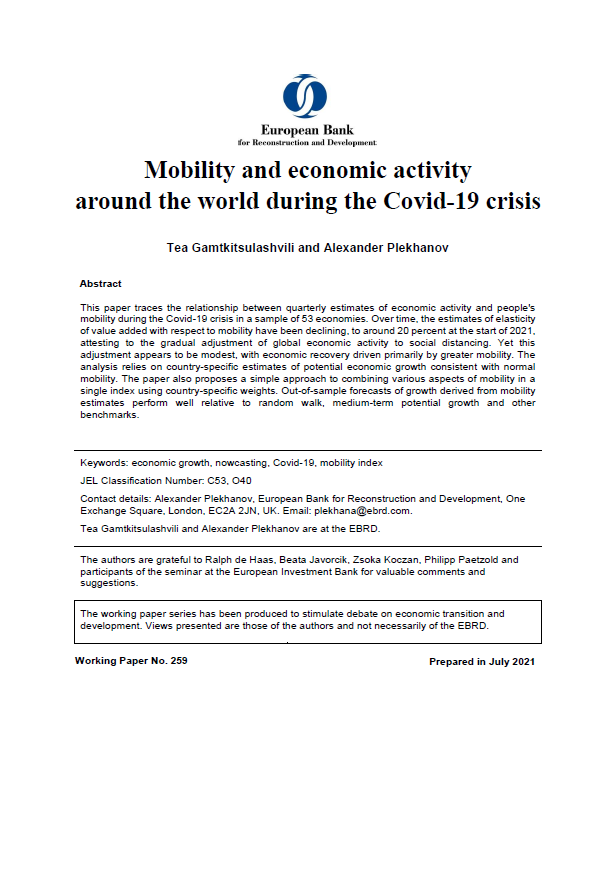In this EBRD working paper authors discuss "the relationship between quarterly estimates of economic activity and people's mobility during the Covid-19 crisis in a sample of 53 economies."
"Social distancing aimed at containing the spread of the Covid-19 has constrained both demand and supply across economies resulting in the greatest disruption to global economic activity since the Second World War. The drop in people’s movements relative to the normal state of the economy has been a good predictor of economic activity since the early months of the crisis.
Economic activity partially recovered towards the end of 2020 and the start of 2021 notwithstanding new waves of infections, leading to a perception of economic activity becoming less sensitive to the mobility deficit. The April 2021 World Economic Outlook, for instance, notes that adaptation to pandemic life has enabled the global economy to do well despite subdued overall mobility (IMF, 2021). This paper revisits this perception using quarterly growth data from a cross-section of 53 advanced economies, emerging markets and lower-income economies with timely releases of seasonally adjusted quarterly GDP growth rates."
The working paper is prepared by the EBRD in English language. Click here to access the document.
Source: EBRD
Illustration: EBRD



